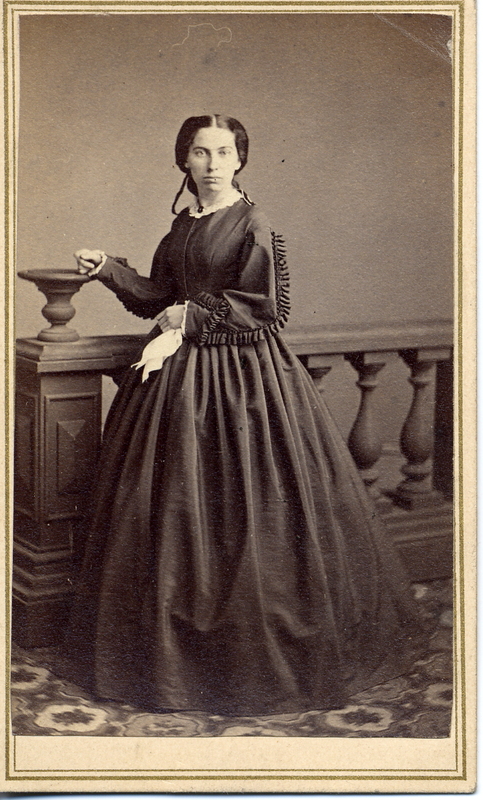Early Bloomington Photography Studios
Cartes de Visite
Cartes de visite are small, 2 1/2 x 4 inch cards bearing an albumen photographic print. They were the natural, photographic evolution of the calling card, and they were immensely popular in the mid-1800s. With the invention of the durable albumen print on card, photographs were more accessible and shareable than ever before. Demand for professional photography services increased, and brick-and-mortar studios started popping up in Bloomington to meet the demand.
J.B. Allison
James Benjamin Allison was a Bloomington studio photographer from 1859 through the 1880s. He appears to have been a Wylie family friend, supplying the albumen prints for Louisa's crystoleums in 1870 and working alongside Theophilus and Brown in producing an album of Indiana University photographs in 1876.
Allison worked as in itinerant photographer, primarily in Greene County, before owning several permanent studios in Bloomington over his decades of work in the town.
While Allison appeared to have a special relationship with the Wylies, he was far from the only studio photographer in town. The demand for photographs was so high in the mid- to late-1800s that Bloomington could support several studios at once. There were at least three other photography studios in town in the 1860s– Seward & Thorn, J.F. Ward, and Koon & Childs– ballooning to ten or more studios by the 1880s.
Cabinet Cards
While cartes de visite remained in use through the end of the century, they were somewhat replaced by the larger cabinet card in the 1880s. Because of their larger size, they could be displayed in the home more effectively than small cartes de visite.





